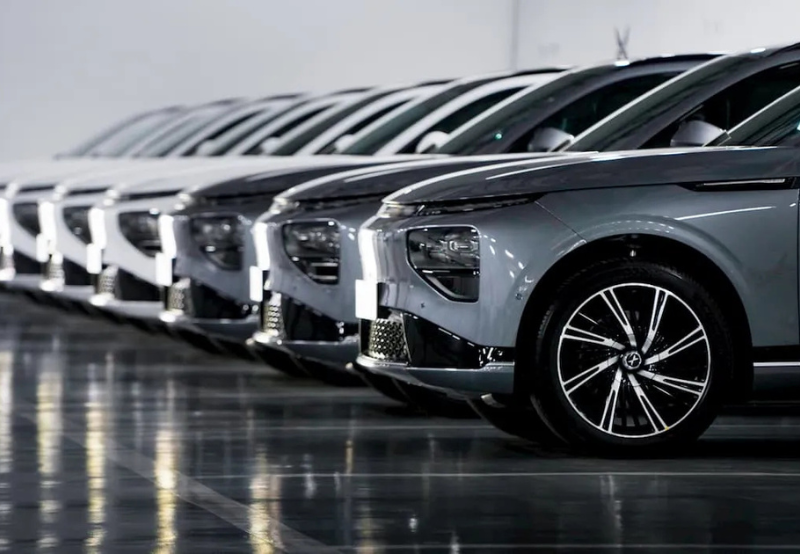The San Antonio Second-Life EV Battery Project is turning retired EV batteries into grid-scale energy storage units, boosting sustainability and grid resilience.
📖 Introduction
The San Antonio Second-Life EV Battery Project is rewriting the future of energy storage. By transforming retired electric vehicle (EV) batteries into high-capacity grid-level storage units, this pioneering initiative demonstrates how innovation and sustainability can work hand in hand. As cities across the globe seek solutions for renewable energy integration, San Antonio’s forward-thinking approach offers a blueprint for balancing energy demand, cutting waste, and building a resilient power grid.
This project proves that an EV battery’s journey doesn’t end when it’s no longer suitable for vehicles. Instead, it enters a second, equally important life: powering homes, businesses, and even entire communities.
📑 Table of Contents
- Why San Antonio’s Second-Life EV Battery Project Matters
- Understanding Second-Life EV Batteries
- San Antonio’s Role in Pioneering Grid Storage
- Technology Behind Second-Life Battery Systems
- Environmental Benefits of Second-Life Projects
- Economic Impact and Investment Opportunities
- Challenges in Battery Repurposing
- How This Project Inspires Global Trends
- Future Outlook: Scaling Second-Life Storage
- Conclusion
1. Why San Antonio’s Second-Life EV Battery Project Matters
San Antonio’s grid has faced increasing strain due to rising demand, unpredictable weather events, and the transition to renewables. The Second-Life EV Battery Project offers a cost-effective, scalable solution by using batteries that have already served a full lifecycle in electric vehicles.
By repurposing these batteries, the project reduces manufacturing emissions, lowers storage costs, and extends the value of raw materials like lithium, nickel, and cobalt, which are often mined under environmentally challenging conditions.
2. Understanding Second-Life EV Batteries
When EV batteries drop below 70–80% capacity, they’re typically deemed inefficient for driving. However, they retain significant storage potential. These batteries can be repurposed into units that store renewable energy from solar and wind farms, stabilising power supply and supporting microgrids.
Repurposing extends the lifecycle of EV batteries by 5–10 years, reducing waste while helping cities move closer to net-zero emissions goals.
3. San Antonio’s Role in Pioneering Grid Storage
San Antonio is emerging as a clean energy hub in Texas. This battery initiative is part of the city’s broader mission to:
- Improve grid resilience during extreme weather events.
- Support Texas’ increasing renewable energy generation.
- Lead innovation in sustainable energy systems across the United States.
The project positions San Antonio as a trailblazer for second-life storage models.
4. Technology Behind Second-Life Battery Systems
Repurposing EV batteries involves:
- Battery Collection: Retrieving end-of-life EV batteries from manufacturers and dealerships.
- Capacity Testing: Assessing usable cells and modules.
- Reassembly: Creating modular storage packs optimised for stationary applications.
- Smart Integration: Adding advanced battery management systems (BMS) and safety features.
- Deployment: Installing units at substations, commercial sites, and residential hubs.
The result? A safe, reliable, and cost-effective solution to one of the energy industry’s biggest challenges: storage scalability.
5. Environmental Benefits of Second-Life Projects
This project addresses multiple environmental goals:
- Reduces electronic waste by keeping thousands of tonnes of batteries out of landfills.
- Lowers the need for new mining of critical minerals.
- Cuts carbon emissions by enabling renewable energy storage.
- Encourages a circular economy in battery manufacturing.
6. Economic Impact and Investment Opportunities
Second-life batteries are cheaper than new battery packs, making them a lucrative choice for energy providers and businesses. Analysts project that by 2030, the global second-life battery market could surpass $20 billion.
San Antonio’s early adoption creates opportunities for:
- Local manufacturing and assembly jobs.
- Partnerships between EV manufacturers and utility providers.
- Private investments in large-scale renewable energy projects.
7. Challenges in Battery Repurposing
While promising, second-life batteries face challenges:
- Lack of standardisation in EV battery design.
- Complex logistics for collection and testing.
- Recycling infrastructure for non-usable battery components.
- Regulatory frameworks that need to evolve.
Addressing these challenges will be key to unlocking the full potential of second-life projects.
8. How This Project Inspires Global Trends
The San Antonio project reflects a growing international trend:
- Europe: BMW and Renault are investing heavily in second-life storage.
- Japan: Nissan is powering EV charging stations with repurposed Leaf batteries.
- India: Emerging startups are using second-life batteries for rural microgrids.
By leading in this field, San Antonio sets an example for sustainable urban planning and resilient energy strategies.
9. Future Outlook: Scaling Second-Life Storage
The next decade will see a surge in retired EV batteries as global EV adoption skyrockets. With the right investments, second-life storage could become a mainstream energy infrastructure solution.
San Antonio’s initiative demonstrates a scalable path:
- Deploying community-level storage systems.
- Integrating storage with solar and wind farms.
- Supporting decarbonisation goals by reducing reliance on fossil fuels.
10. Conclusion
The San Antonio Second-Life EV Battery Project is more than an energy innovation—it’s a symbol of sustainability and forward-thinking urban planning. By transforming end-of-life EV batteries into powerful storage systems, San Antonio proves that climate-friendly technology is not just about creating new solutions but also redefining the lifecycle of existing resources.
This initiative offers a blueprint for other cities worldwide, showing how second-life batteries can drive grid reliability, reduce environmental impact, and accelerate the transition to renewable energy.
🔗 Related Reading : Copper Market Rallies on Clean-Energy Demand | 7 Insights into $340 Billion Growth






